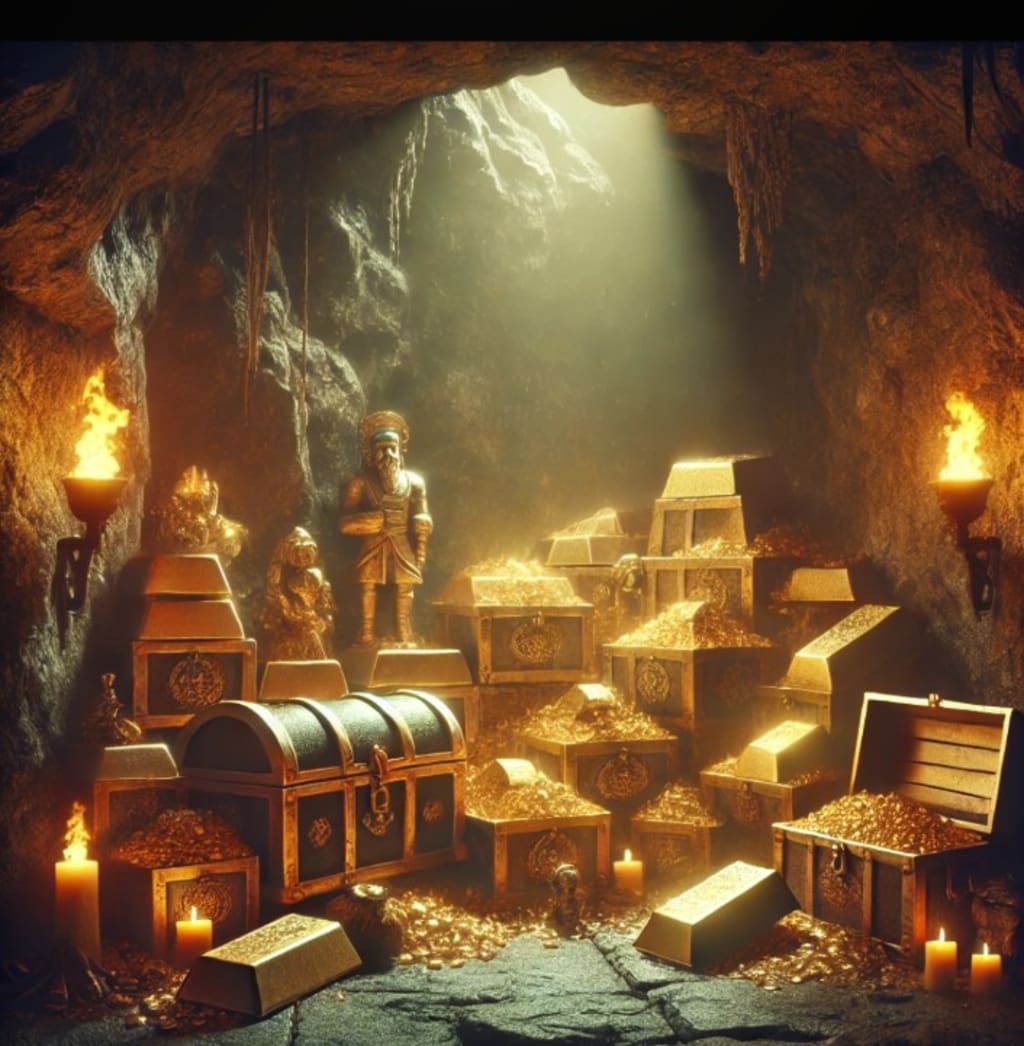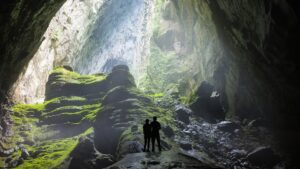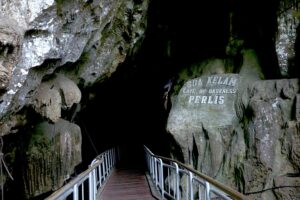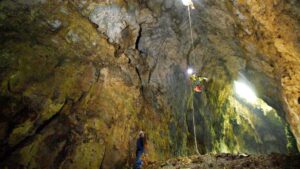Discovering Gua Jepang Sentonorejo: A Hidden Cave Treasure

Nestled within the lush landscapes of Indonesia, Gua Jepang Sentonorejo is a captivating natural wonder that offers a glimpse into the region’s geological and cultural history. This hidden cave, often overlooked by mainstream tourism, provides visitors with an extraordinary experience of natural beauty, historical significance, and ecological diversity. As a site that combines geological marvels with cultural narratives, Gua Jepang Sentonorejo stands as a testament to the rich heritage and natural splendor of the area. Whether you’re an avid explorer, history enthusiast, or nature lover, this cave promises an intriguing journey into the depths of Indonesia’s underground marvels.
Geographical Location and Accessibility of Gua Jepang Sentonorejo
Gua Jepang Sentonorejo is located in the Sentonorejo village, situated within the Magelang Regency of Central Java, Indonesia. The cave is nestled amidst verdant hills and dense forested areas, making it a pristine natural environment that remains relatively untouched. To reach the site, visitors typically travel via the main roads connecting Magelang city to nearby rural communities, with the final approach involving a short trek through scenic countryside. The accessibility is facilitated by well-maintained pathways, though some parts may require moderate hiking or climbing, especially during the rainy season when trails can become slippery.
The nearest major city is Magelang, which is approximately a 2-hour drive from Yogyakarta and about 3 hours from Semarang. Travelers can rent vehicles or join guided tours that include transportation to the cave. Local transportation options such as motorbikes or shared vehicles are also available for those who prefer a more adventurous approach. The accessibility, while somewhat rustic, is manageable for most visitors with basic physical fitness, and the journey itself offers picturesque views of Java’s natural landscape.
Geological Formation and Unique Features of the Cave
Gua Jepang Sentonorejo is a limestone cave formed over millions of years through the process of karstification, where acidic water dissolves soluble rocks to create underground tunnels and chambers. The cave’s interior showcases a stunning array of stalactites and stalagmites, formed by mineral deposits over centuries. Its natural formations are intricate and varied, featuring delicate draperies, flowstones, and columns that create a surreal underground landscape.
A notable feature of the cave is its large central chamber, which serves as a natural auditorium and has been used historically for gatherings. The cave also contains underground streams and small waterfalls, adding to its mystique and creating a cool, humid microclimate within. Some sections of the cave exhibit unique mineral deposits that shimmer under flashlight illumination, highlighting the geological richness of the site. The overall structure of Gua Jepang Sentonorejo reflects a complex history of geological activity, making it a fascinating site for geologists and tourists alike.
Historical Significance of Gua Jepang Sentonorejo in Local Culture
Historically, Gua Jepang Sentonorejo holds a significant place in the local cultural narrative, especially related to the Japanese occupation during World War II. During this period, the cave was used as a hiding place by local residents and Japanese soldiers, serving as a strategic refuge and a site of clandestine activities. Oral histories passed down through generations recount stories of resistance, survival, and secret meetings held within its depths.
Beyond its wartime history, the cave is also intertwined with local spiritual beliefs and traditions. It is considered a sacred site by some communities, believed to be inhabited by ancestral spirits or guardians that protect the village. Traditional ceremonies and rituals are occasionally held within or near the cave, emphasizing its cultural importance. The historical layers embedded in Gua Jepang Sentonorejo make it not only a natural wonder but also a living monument of the region’s resilience and cultural heritage.
Flora and Fauna Found Within the Cave Environment
The ecosystem within Gua Jepang Sentonorejo is characterized by a variety of specialized flora and fauna adapted to the dark, humid environment of the cave. Bats are among the most prominent inhabitants, with several species roosting in the crevices and ceilings, playing a vital role in maintaining the cave’s ecological balance through pollination and insect control. Their presence also contributes to nutrient cycles within the cave environment.
In addition to bats, the cave hosts a diverse array of invertebrates, including cave crickets, beetles, and other small arthropods that thrive in the dark. Some rare and endemic species have been identified, indicating the ecological uniqueness of the site. The entrance zones of the cave are often lush with mosses, ferns, and other moisture-loving plants that benefit from the microclimate created by the cave’s structure. Conservation of these delicate ecosystems is crucial, as they are sensitive to human disturbance and environmental changes.
Visitor Facilities and Tips for Exploring Gua Jepang Sentonorejo
While Gua Jepang Sentonorejo remains relatively undeveloped compared to mainstream tourist caves, there are basic facilities to support visitors. These typically include designated parking areas, simple rest spots, and guides who can accompany visitors through the cave. It is advisable to wear sturdy shoes, preferably waterproof and with good grip, due to the uneven and potentially slippery surfaces inside the cave. Bringing a flashlight or headlamp is essential, as parts of the cave are dark and require additional lighting.
Visitors are encouraged to carry water, wear comfortable clothing suitable for humid conditions, and respect the natural environment by refraining from littering or touching delicate formations. Guided tours are highly recommended for safety and to enrich the experience with historical and ecological insights. It is also advisable to visit during dry weather to minimize the risk of slippery paths and to ensure better visibility of the cave’s features. Planning ahead and preparing appropriately will ensure a safe and enjoyable exploration of this natural marvel.
Conservation Efforts and Preservation Challenges Facing the Cave
Efforts to preserve Gua Jepang Sentonorejo are ongoing, focusing on protecting its geological features, ecological diversity, and cultural significance. Local authorities and conservation groups have initiated programs to regulate visitor access, prevent vandalism, and promote sustainable tourism practices. Educational campaigns aim to raise awareness about the importance of preserving the cave’s fragile environment, especially its endemic species and mineral formations.
However, the cave faces several challenges, including environmental degradation caused by unregulated tourism, pollution, and illegal activities such as vandalism or unauthorized exploration. Climate change also poses a threat, with increased rainfall potentially leading to erosion or flooding within the cave. Maintaining a balance between accessibility and conservation remains a key concern, requiring continuous monitoring, community involvement, and investment in infrastructure improvements that minimize human impact.
Guided Tours and Educational Programs at Gua Jepang Sentonorejo
To enhance visitor understanding and ensure safety, guided tours are a common feature at Gua Jepang Sentonorejo. Local guides, often well-versed in the cave’s history, geology, and ecology, lead groups through designated paths, sharing stories and explanations that enrich the experience. These tours typically include visits to key formations, historical sites within the cave, and explanations about the local flora and fauna.
Educational programs are occasionally organized in collaboration with local schools and environmental groups, aiming to foster awareness about cave conservation and regional history. Such initiatives often include workshops, storytelling sessions, and hands-on activities that engage participants of all ages. These programs serve to deepen appreciation for the site’s cultural and natural value, fostering a sense of stewardship among visitors and local communities alike.
Nearby Attractions and Accommodations for Visitors
Gua Jepang Sentonorejo is situated in a region rich with other attractions and natural sites. Nearby, visitors can explore the scenic landscapes of the Menoreh Hills, visit traditional Javanese villages, or hike through lush forests. The area also offers waterfalls, rice terraces, and cultural landmarks that provide a well-rounded travel experience.
For accommodations, a range of options is available, from modest homestays to more comfortable guesthouses and eco-lodges. Many of these are located within Sentonorejo village or in nearby towns like Magelang and Yogyakarta. These accommodations often provide authentic local experiences and serve as a base for exploring the cave and surrounding attractions. Local cuisine, cultural performances, and craft markets further enrich the visit, making Gua Jepang Sentonorejo a memorable part of a broader journey through Central Java.
How to Plan Your Visit to Gua Jepang Sentonorejo Effectively
Planning a visit to Gua Jepang Sentonorejo requires some preparation to ensure safety and enjoyment. It’s best to check weather conditions beforehand, as heavy rains can make access more difficult and increase the risk of slips. Contact local guides or tour operators in advance to arrange guided tours, which are highly recommended for a comprehensive experience.
It’s advisable to start early in the day to avoid the afternoon heat and to allow ample time for exploration. Bring essentials such as sturdy footwear, a flashlight, water, and a hat or cap for sun protection when outside. Respect local customs and environmental guidelines, and take time to learn about the cave’s history and ecology through the guidance provided. With proper planning, visitors can fully appreciate the natural beauty and cultural significance of Gua Jepang Sentonorejo, creating lasting memories of this extraordinary underground world.



